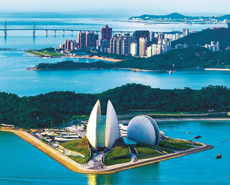
Chinese ferrosilicon market still not to be optimistic in H2 2019
----Interview with Liu Liming
General Manager
Ningxia Hao Ruisen Industrial Co., Ltd.
General Manager
Ningxia Hao Ruisen Industrial Co., Ltd.
Ningxia Hao Ruisen Industrial Co., Ltd. is mainly engaged in the trading of ferrosilicon and other ferroalloys used in steel mills. Mr. Liu Liming used to work as the director of sales department of Ningxia Tianjing Metallurgy Co., Ltd. for 18 years. He is doing research for the ferrosilicon spot and commodity market for many years.
Asian Metal: Thank you for accepting Asian Metal's exclusive interview, please introduce your business briefly.
Mr. Liu: Hao Ruisen Industrial Co., Ltd. was established two years ago, and we mainly involve in ferrosilicon, silicon carbide, semi coke, and other ferroalloys and refractory.

















